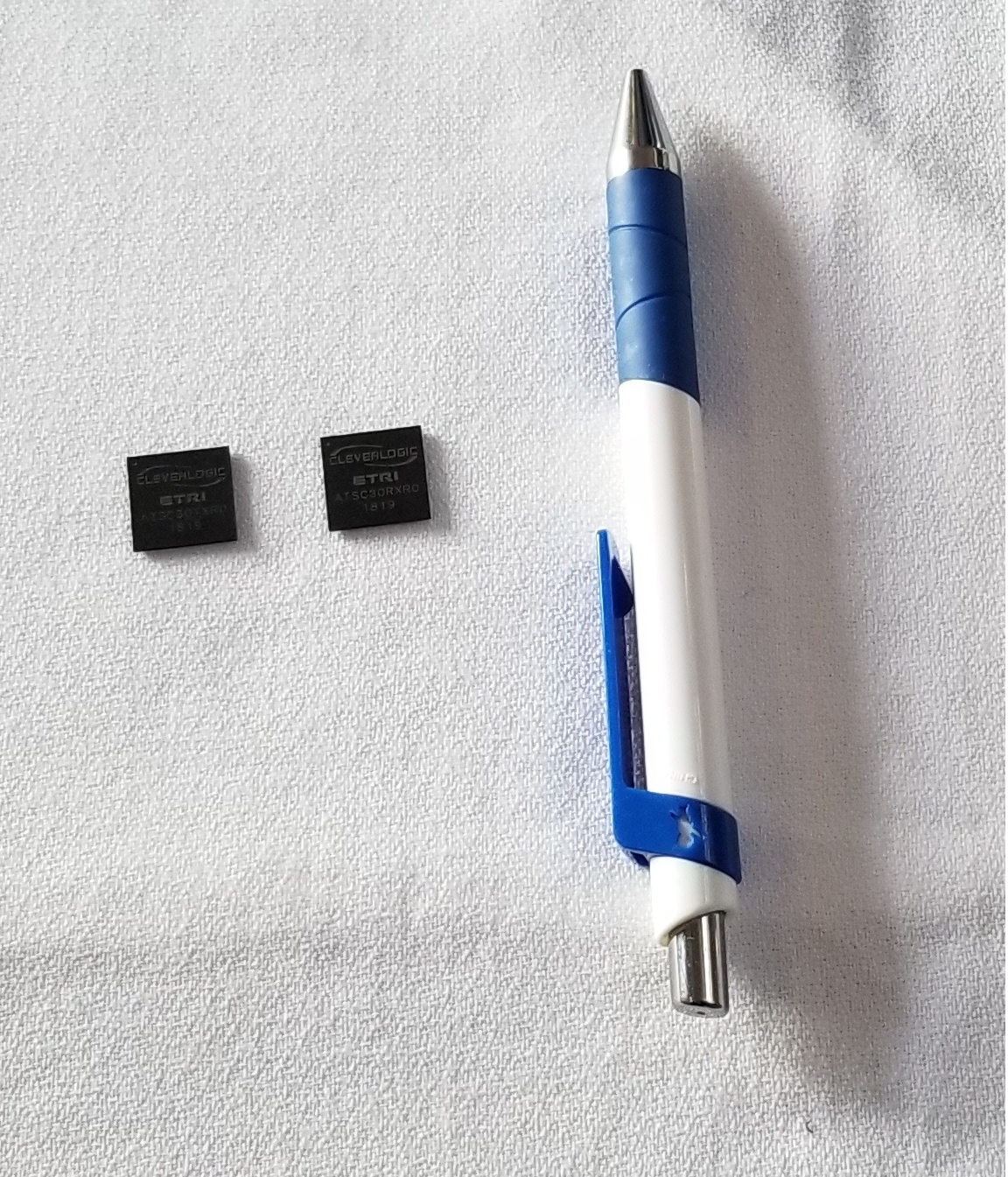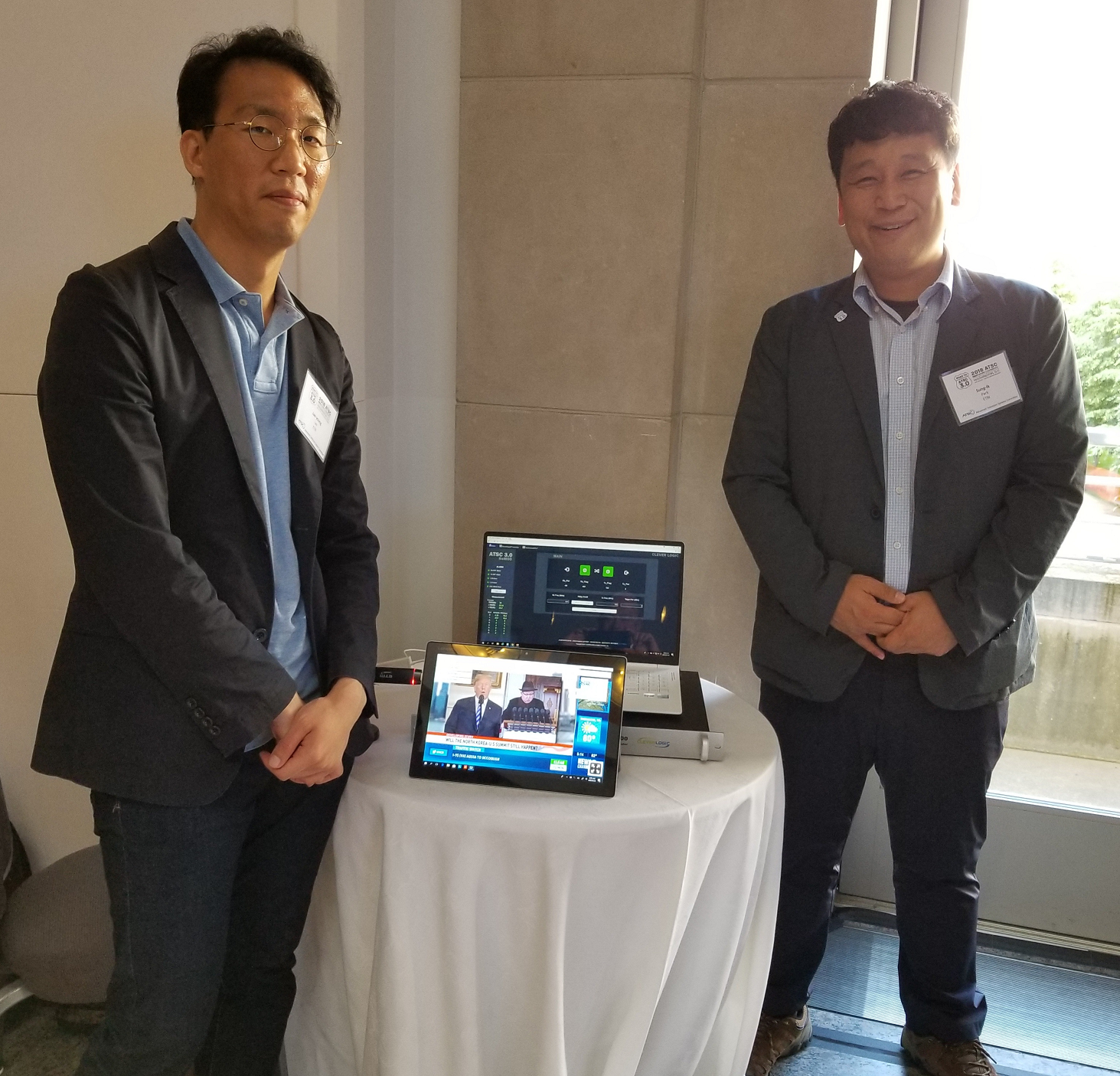WASHINGTON—At the ATSC 3.0 annual meeting in May, South Korea’s Electronics and Telecommunications Institute demo-ed a small, low-power ATSC 3.0 on-channel repeater to drive part of its tabletop presentation in the lobby adjacent to the meeting room at the Ronald Reagan Building where the event took place. The display included a prototype exciter and demodulator chips ETRI has developed for the unit, which currently relies on expensive FPGAs.

Although the demo device in D.C. was not for sale from ETRI—nor would it ever be because the institute focuses on research, not sales—the repeater nonetheless will likely be available in December from South Korean broadcast vendor Clever Logic, according to Sung-Ik Park, principal researcher at ETRI.
[Read: ATSC Meeting Explores 3.0 Deployments]
Equipped with a small amplifier, the device will be capable of putting out 30dBm. For South Korean broadcasters transmitting 3.0, it solves the problem of complying with Master Antenna TV system regulations. Those rules require any building with more than five households to be equipped with an MATV system, explained Park
For U.S. broadcasters deploying ATSC 3.0, the new device opens up new opportunities that were not available to them in 1.0, he said.

For instance, imagine a football stadium with tens of thousands of fans being able to watch TV coverage of the game on the field in front of them being transmitted from a station’s big stick, which is received and retransmitted by the new low-power unit, said Park.
The commercialized version of the product based on the ETRI chips has a target price of $1,000 to $2,000, far less than the price of an FPGA-based product, which would cost about $10,000, he added.
The professional video industry's #1 source for news, trends and product and tech information. Sign up below.
The exciter and demodulator chipset modules are on track to meet an October-November deadline, he added.
For a comprehensive list of TV Technology’s ATSC 3.0 coverage, see ourATSC3 silo.
Phil Kurz is a contributing editor to TV Tech. He has written about TV and video technology for more than 30 years and served as editor of three leading industry magazines. He earned a Bachelor of Journalism and a Master’s Degree in Journalism from the University of Missouri-Columbia School of Journalism.

